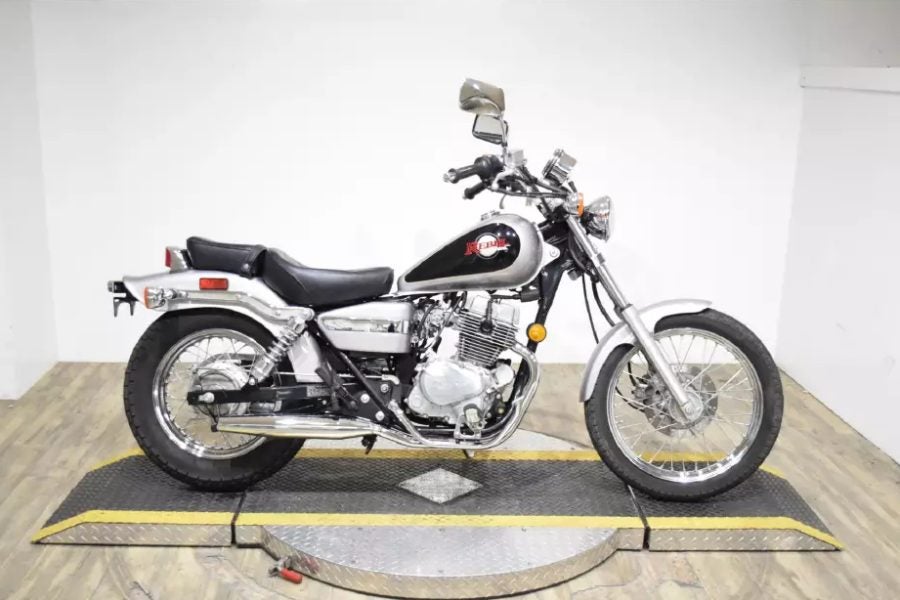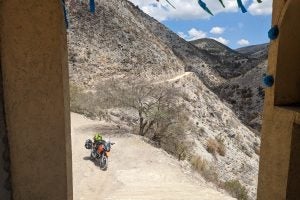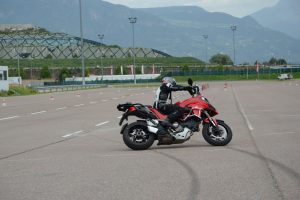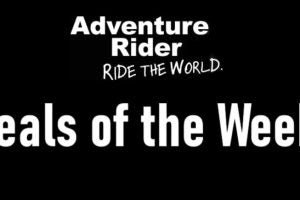Often, the motorcycles we dream of owning are only around for a short production run. The KTM 950 Super Enduro was only built for three years. The BMW HP2 was only made for four years. This isn’t always the case, but it’s often true that the big OEMs have to turn over their high-performance bikes quickly due to the reality of economics and ever-changing performance envelopes. The bikes that stay in production long-term are the machines that lag behind. In the ADV world, this is the Yamaha Super Tenere. In the sportbike world, it’s the Suzuki GSX-R600. And in the world of lowly beginner bikes, the best example might be the Honda Rebel, the machine that started countless riding careers—it even almost started mine.
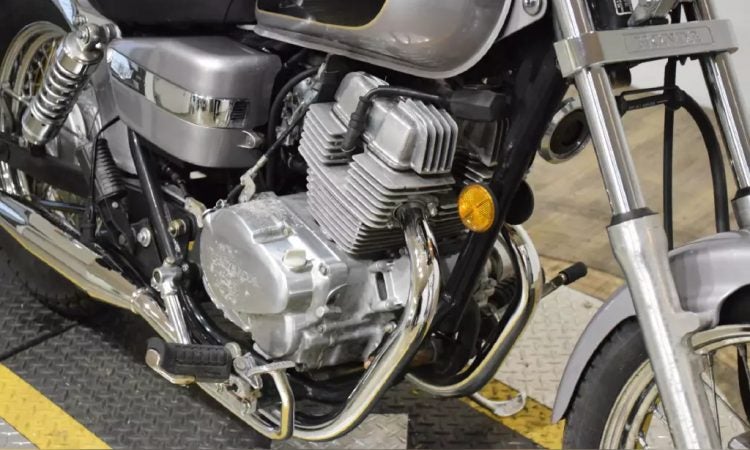
That tame air-cooled engine was still enough to haul you down secondary roads, but you wouldn’t have much fun on the interstate. Photo: Monster Powersports
It came from the 1980s!
The Honda Rebel CM250 debuted in 1985, but the machine is actually a descendent of the CM185 Twinstar, an even more humble and uninspiring bike from the late 1970s. By the mid-’80s, Honda had refined the beginner bike formula to a basic foundation of an air-cooled 234cc parallel twin engine with two-valve cylinder heads. Honda used the same engine in the Nighthawk 250 standard bike as well, claiming it made 16 horsepower and 12.4 pound-feet of torque. Not too exciting, even in the mid-1980s learner market.
But Rebel buyers weren’t looking for a rocket. They wanted an easy-to-ride, easy-to-buy bike, and the Rebel’s low 26.6-inch seat height made it easy to throw a leg over; a 320-pound wet weight meant it was easy to keep the bike centred and upright at a stop. Fuel economy was fantastic, around 70 mpg for most users. The CDI ignition didn’t need fettling, like a points system, which would have been common on the second-hand bikes of that time. There was even a disc brake up front, something that was unheard of on beginner bikes less than a decade earlier. So while the Rebel was a cruiser, built after a pattern that began decades earlier in the US, an ocean away from Honda’s headquarters, it was actually as modern as you could practically build a cheap beginner bike at the time of its debut. And people liked that, so Honda kept on building them for a really long time.
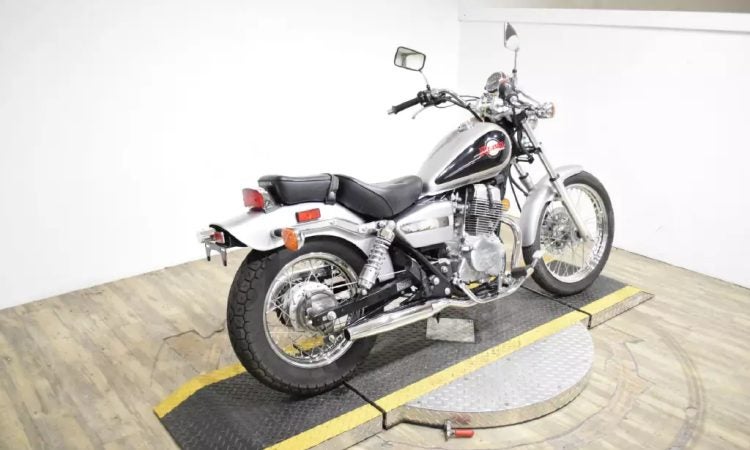
A lot of owners tricked these bikes out with a sissy bar and saddlebags, trying to fake the bagger look. Mercifully, this machine has been spared such indignities. Photo: Monster Powersports
The basic beginner bike
There were occasional breaks in production, but Honda built this design off-and-on for 31 years. The last air-cooled Honda Rebels were sold in 2016, and the next-generation Rebel 250/300 models debuted in 2017, based around the same liquid-cooled single-cylinder design that Honda debuted in the CBR250 in 2011.
That’s a lot of beginner bikes built, but it wasn’t just newbies and MSF courses that bought these bikes. Amusingly, the Washington, D.C. police department was also a customer. They lacked the usual accoutrements of a police bike, running just a top box and windshield with a big POLICE sticker across the front (see photos here). They used them for light-duty work in urban areas, and probably would have been a lot better off with dual sport bikes for that purpose—but when it was time to switch, they bought Sportsters instead, which seems like a sideways step at best. Somewhat amusingly, the complaint at the time was that the Rebels couldn’t keep up with street traffic in DC, which makes you wonder why they bought them in the first place.
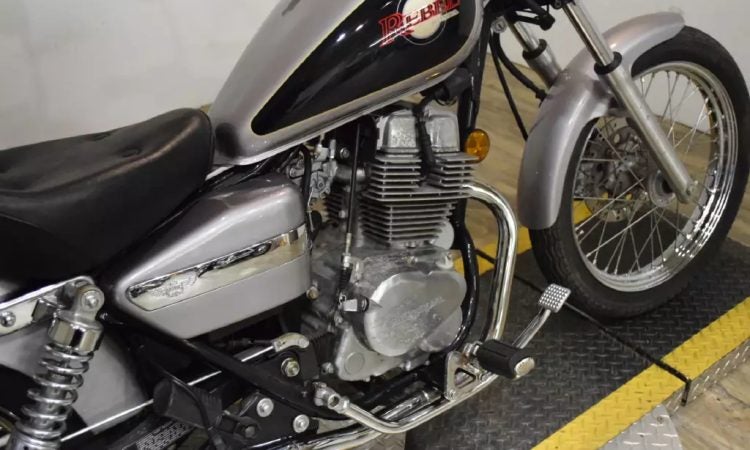
The engine cases appear to have some scuffed paint or corrosion, but otherwise, this bike looks pretty clean. Photo: Monster Powersports
The Rebel cruisers were popular with civilian buyers who just wanted an affordable small bike that looked kind of like a Harley, but without the price tag. In my area of North America, the most common Rebel 250 owners that I saw were younger female riders and small-statured older male riders who were often happy to add a few stickers of bald eagles or Confederate flags to let onlookers know that while they were riding a 16-horsepower bike, they were still bad-asses at heart. Or so they thought, as they rode down to darts night at the Legion.
The Rebel also had a few fans in the custom bike scene. With its raked-out look and a set of twin shocks that ended right behind the rider’s saddle, it was easy enough to give the bike a Konged look. A busy afternoon with a socket set and maybe an angle grinder, and presto, instant bobber! While I’m not a huge fan of poorly-done homebuilds, I do think it was pretty hard to mess up a Rebel, and if you did, well, no purists were complaining about the violation.
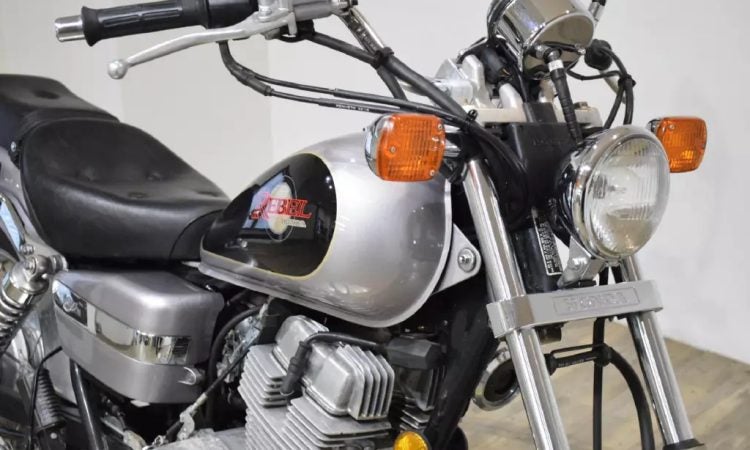
The bike’s chrome generally seems pretty clean, which is an indication it was probably taken care of. Photo: Monster Powersports
The Rebel today
Today, the new Rebel 300 is better than the original in every way but one: Pricing. The new 300 is fairly affordable by 2024’s standards, at $4,849. But if you just want a cheap bike, you can get a very clean used Rebel 250 for little money.
Consider the machine here, a 2000 model at Monster Powersports in Wauconda, Illinois, with only 3,642 miles on the odometer. Asking price is $2,399; maybe they could do better than that, maybe they won’t. But that’s not very much money for a bike that looks pretty new. While I would recommend an XT250 or TW200 or something like that for a first bike, you could do a lot worse than something like this pristine Rebel.
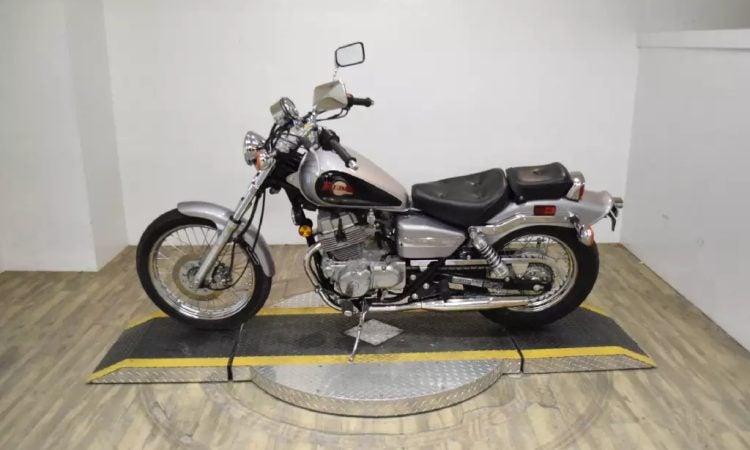
I almost ended up on one of these in my college days, and it probably would have been a much better choice than the poorly-running KZ750 L3 I ended up on instead. Photo: Monster Powersports
Or you could buy this 2009 model from a private seller in Mexico, New York, with a set of saddlebags thrown in and a $2,500 price tag and only 1,908 miles on the odometer. Based off its mileage, that bike isn’t even ready for its second oil change. And if you’re in college, and you need cheap wheels, something like this might get you by until you can buy something you like better.
That’s when I first saw the Rebel. I remember sitting at my desk in college, thinking of how I needed wheels, and the very first time I ever looked at a bike was when I logged on to Honda’s website to check out what they had in a student’s price range. I didn’t buy one, because I didn’t have the money in cash-in-hand. But I often wonder: If I’d started my riding career on a new or new-ish bike that just worked without the years of breakdowns and misery that I went through on a collection of poorly-running UJMs—would I be the same motorcyclist I am today, or would I even be a motorcyclist at all?
With that in mind, maybe you don’t want a bike like this, if you’re a newbie. Maybe it would make your moto life too easy?


